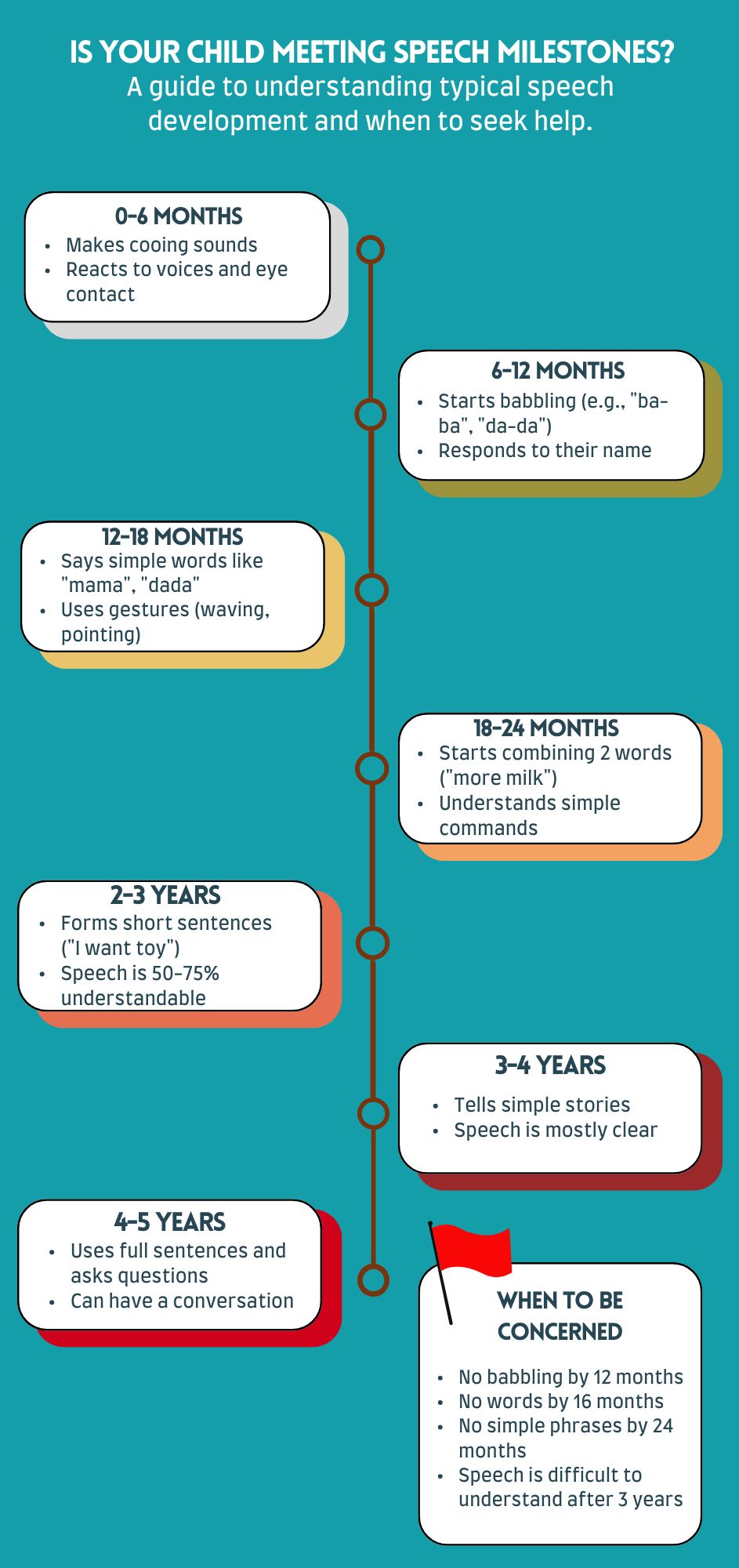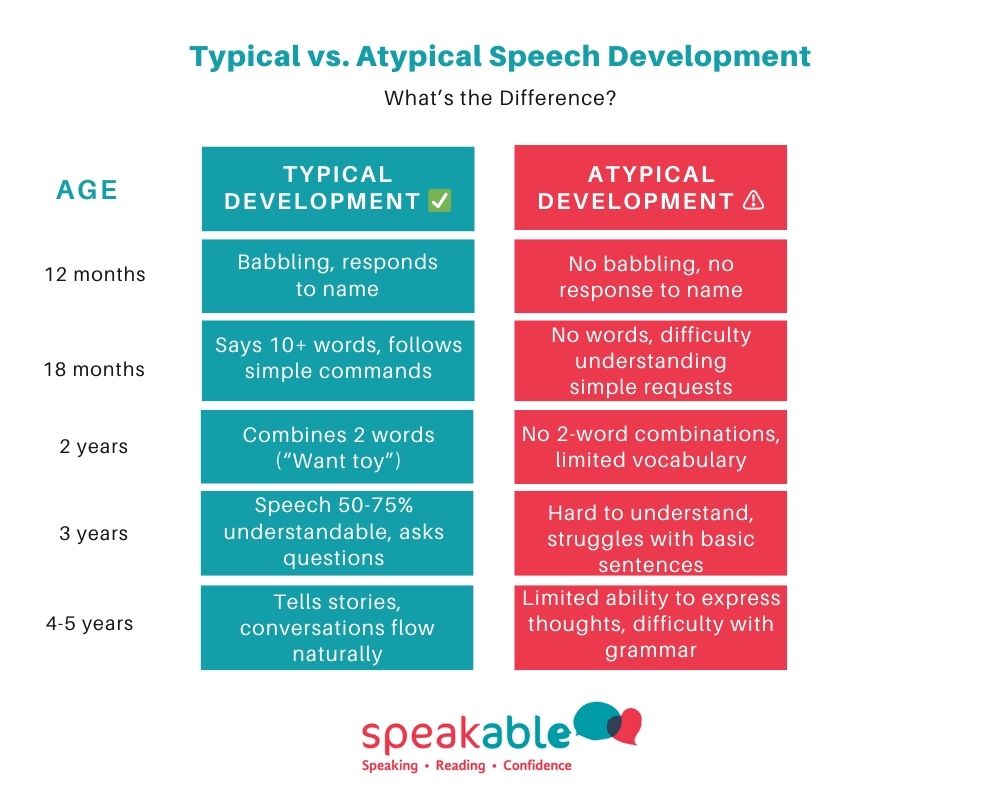When to Be Concerned: A Look at Speech Development
 When to Be Concerned: A Look at Speech Development
When to Be Concerned: A Look at Speech Development
When to Be Concerned: A Look at Speech Development
Every child’s speech development journey is unique, but understanding typical milestones and recognizing potential red flags can make all the difference. In this blog, we’ll explore speech development in children, highlight signs that may indicate a need for professional support, and discuss the benefits of early intervention.
Understanding Typical Speech Development Milestones

Speech development follows a general timeline, though every child progresses at their own pace. Here’s a breakdown of key speech milestones to look for:
- By 12 months: Babies typically start babbling and may say simple words like “mama” or “dada.”
- By 18–24 months: Toddlers begin combining words into short phrases, such as “more milk” or “big dog.”
- By 3 years: Children can form simple sentences and are understood by familiar listeners most of the time.
- By 4–5 years: Speech becomes clearer, and children can tell stories, ask questions, and engage in more complex conversations.
Red Flags in Speech Development: When to Seek Help

Recognizing potential issues early can lead to more effective intervention. Here are some red flags in speech development to watch for:
- Limited babbling or vocalization by 12 months.
- No single words by 16 months or no two-word phrases by 24 months.
- Difficulty understanding simple instructions by age 2.
- Speech that is hard to understand by age 3 (e.g., strangers struggle to understand them).
- Frequent frustration when trying to communicate.
- Stuttering or other disruptions in speech flow that persist beyond a few months.
The Benefits of Early Intervention in Speech Development

Early intervention can have a profound impact on a child’s speech and language development. Here’s why acting early matters:
- Improved Communication Skills: Early therapy helps children develop the tools they need to express themselves clearly and confidently.
- Boosted Social Skills: Clear speech enables children to interact more effectively with peers, reducing frustration and building self-esteem.
- Better Academic Performance: Strong language skills are the foundation for reading, writing, and learning in school.
- Long-Term Success: Addressing speech issues early can prevent challenges later in life, such as difficulties with social interactions or professional communication.
What Can You Do Next?

If you’re concerned about your child’s speech development, don’t wait. Early intervention can set the stage for a lifetime of confident communication. Here’s how you can take the next steps:
- Observe and Document: Keep track of your child’s speech patterns and any concerns you have.
- Consult a Professional: Reach out to a speech pathologist for an evaluation.
- Explore Therapy Options: At Speakable, we offer personalized therapy programs tailored to your child’s unique needs.
Final Thoughts
Speech development is a journey, and every child moves at their own pace. By staying informed and proactive, you can ensure your child has the support they need to thrive.
Want to learn more? Visit our blog for expert insights on speech and language development!





Because you can.
Suite 10, L2 79-85 Oxford St
Bondi Junction
Mon-Fri 8am-6pm
Sat 9am-4pm